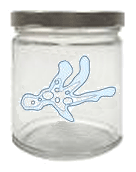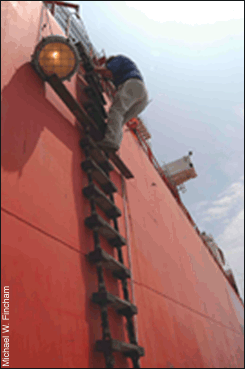 |
Ashley and Herbert were having their weekly puzzle competition.
“Look,” said Ashley, “we have these two jars of the same size. In the first there is one amoeba. In the second jar there are two amoebas. An amoeba can reproduce itself in three minutes. Now if it takes two amoebas in the second jar three hours to fill the jar right up, how long does it take the one amoeba in the first jar?” “What a novel problem!” cried Herbert delightedly. “But I know the answer. Perhaps you know this one?” “A ship is at anchor. Over its side hangs a rope ladder with rungs 30 centimetres apart. The tide rises at the rate of 40 centimetres an hour. If the ladder has 24 rungs above the water level before the tide begins to rise, how many rungs will be above water after six hours?” |
 |